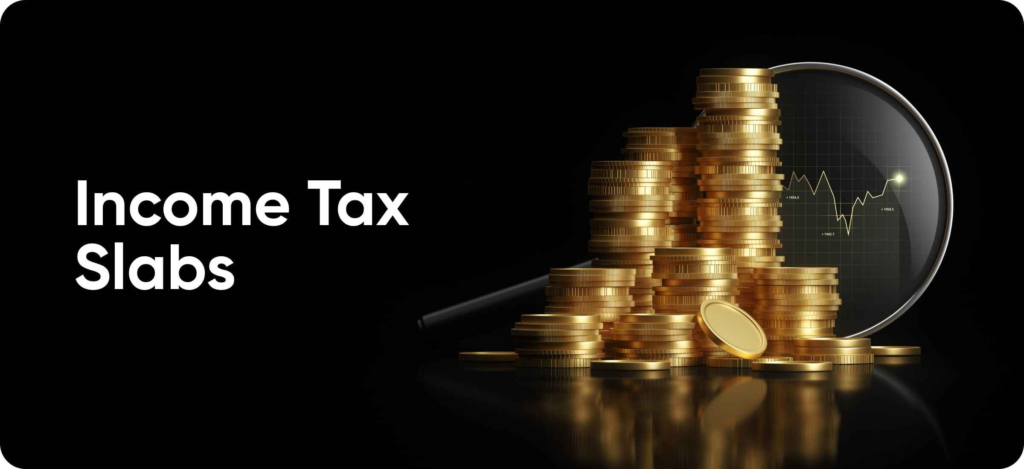
Here’s a simplified version of the Income Tax Slab for FY 2024-25 and FY 2025-26, explaining both the Old and New Tax Regimes:
New Tax Regime for FY 2024-25 & FY 2025-26
Under the New Tax Regime, there are no exemptions or deductions (like HRA, insurance, etc.), but the tax rates are lower. Here’s how the tax is calculated:
Income Slabs & Tax Rates (FY 2024-25 & FY 2025-26)
| Income Range | Tax Rate |
|---|---|
| Up to ₹3,00,000 | NIL |
| ₹3,00,001 to ₹7,00,000 | 5% |
| ₹7,00,001 to ₹10,00,000 | 10% |
| ₹10,00,001 to ₹12,00,000 | 15% |
| ₹12,00,001 to ₹15,00,000 | 20% |
| ₹15,00,001 and above | 30% |
Key Features of the New Tax Regime:
- Rebate (Section 87A): If your income is up to ₹7,00,000, you get a tax rebate of up to ₹25,000, making your tax liability zero.
- Standard Deduction: From FY 2024-25, a standard deduction of ₹75,000 is available.
- No Exemptions: You cannot claim deductions like HRA, 80C, or home loan interest under the New Regime.
Old Tax Regime for FY 2024-25 & FY 2025-26
Under the Old Tax Regime, you can claim various exemptions and deductions, like HRA, 80C, medical insurance, etc. The tax rates are higher compared to the New Regime.
Income Slabs & Tax Rates for Different Age Groups:
| Income Range | Tax Rate (Below 60 years) | Tax Rate (60 to 80 years) | Tax Rate (Above 80 years) |
|---|---|---|---|
| Up to ₹2,50,000 | NIL | NIL | NIL |
| ₹2,50,001 to ₹5,00,000 | 5% | 5% | NIL |
| ₹5,00,001 to ₹10,00,000 | 20% | 20% | 20% |
| ₹10,00,001 and above | 30% | 30% | 30% |
Key Features of the Old Tax Regime:
- Deductions Available: You can claim deductions under 80C (for investments), 80D (for insurance), HRA (House Rent Allowance), LTA (Leave Travel Allowance), etc.
- Rebate (Section 87A): If your income is up to ₹5,00,000, you get a tax rebate of ₹12,500, making your tax liability zero.
Comparison of New vs Old Tax Regime
- Old Tax Regime: Great if you have many exemptions or deductions like home loan interest or insurance premiums.
- New Tax Regime: Ideal if you don’t want to claim deductions, as it offers simpler tax filing and lower tax rates.
Choosing Between Old and New Regime:
- Go for the New Regime if you don’t have many investments or exemptions.
- Go for the Old Regime if you have tax-saving investments and can claim various exemptions.
Surcharge:
- 10% surcharge if income is between ₹50 lakhs and ₹1 crore.
- 15% surcharge if income is between ₹1 crore and ₹2 crore.
- 25% surcharge if income is between ₹2 crore and ₹5 crore.
- 37% surcharge if income is above ₹5 crore.
(Note: This surcharge is only applicable to high-income earners.)
Health and Education Cess
The Health and Education Cess is an additional tax levied on the total income tax liability, aimed at funding the government’s health and education initiatives.
For individuals, companies, and other entities, the cess is 4% of the total tax liability. This cess is applicable on the total tax calculated after applying the relevant income tax slabs and any other surcharges.
For example, if your total income tax liability (after applying the tax slabs) is Rs. 1,00,000, the Health and Education Cess will be calculated as:
Cess = 4% of Rs. 1,00,000 = Rs. 4,000
So, your final tax payable will be:
Tax Payable = Income Tax + Cess = Rs. 1,00,000 + Rs. 4,000 = Rs. 1,04,000
This cess is mandatory and added to the final amount of income tax payable.
This version breaks it down into easy-to-understand terms and focuses on the important points you need to know. If you need help with anything specific like calculating taxes, feel free to ask!
Disclaimer:
The information provided in this blog is for general informational and education purposes only and does not constitute financial, investment, or professional advice. Always conduct your own research or consult with a qualified financial advisor before making any investment decisions. Investing involves risk, and there is no guarantee of returns. The views expressed here are solely those of the author and do not reflect the opinions of any financial institution, company, or organization. KVSTAX is not responsible for any financial decisions or actions taken based on the content of this blog.

